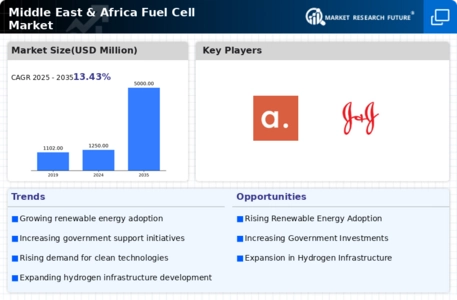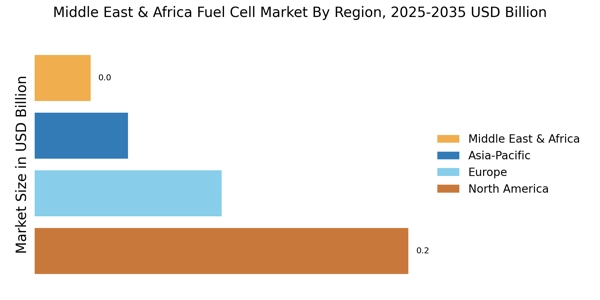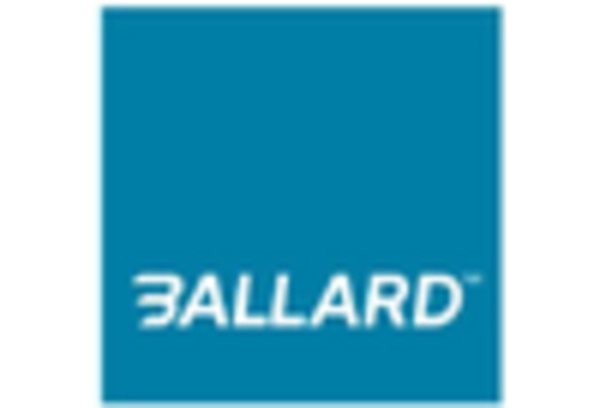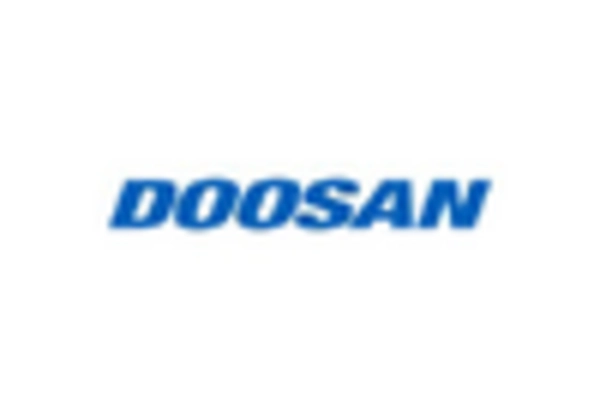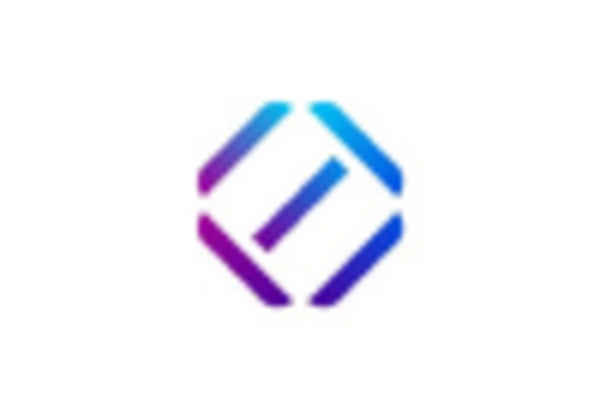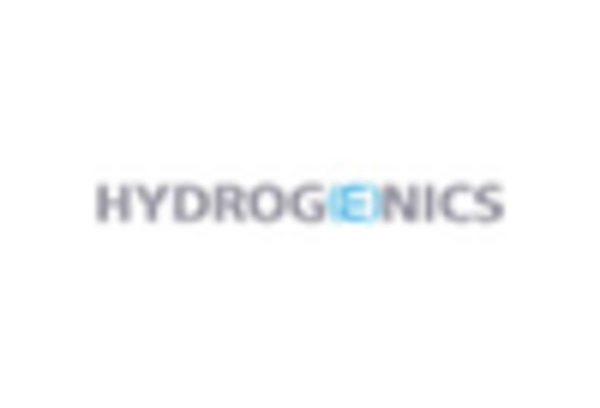Rising Energy Demand
The Middle East & Africa Fuel Cell Market is experiencing a surge in energy demand, driven by rapid urbanization and industrialization across the region. As populations grow and economies expand, the need for reliable and sustainable energy sources becomes increasingly critical. Fuel cells, known for their efficiency and low emissions, are emerging as a viable solution to meet this demand. According to recent estimates, the energy consumption in the Middle East is projected to increase by over 30% by 2030. This trend suggests that fuel cells could play a pivotal role in addressing energy shortages and enhancing energy security, thereby propelling the growth of the fuel cell market in the region.
Environmental Regulations
The Middle East & Africa Fuel Cell Market is significantly influenced by stringent environmental regulations aimed at reducing greenhouse gas emissions. Governments across the region are implementing policies that encourage the adoption of cleaner technologies, including fuel cells. These regulations are often aligned with international climate agreements, pushing industries to transition from fossil fuels to more sustainable energy sources. For instance, several countries in the region have set ambitious targets for reducing carbon emissions by 2030, which could potentially lead to a substantial increase in fuel cell adoption. This regulatory landscape not only fosters innovation but also creates a favorable environment for investment in fuel cell technologies.
Technological Innovations
Technological advancements are a key driver in the Middle East & Africa Fuel Cell Market, as ongoing research and development efforts lead to improved fuel cell efficiency and cost-effectiveness. Innovations in materials science, such as the development of more durable membranes and catalysts, are enhancing the performance of fuel cells. Furthermore, the integration of fuel cells with renewable energy sources, such as solar and wind, is becoming increasingly feasible. This synergy could potentially reduce reliance on traditional energy sources and promote a more sustainable energy ecosystem. As a result, the market is likely to witness a rise in the deployment of fuel cell systems across various sectors, including transportation and stationary power generation.
Investment in Infrastructure
The Middle East & Africa Fuel Cell Market is benefiting from increased investment in infrastructure development, particularly in the energy sector. Governments and private investors are recognizing the potential of fuel cells as a clean energy solution and are channeling funds into research, development, and deployment of fuel cell technologies. For instance, several countries are establishing hydrogen production facilities and fueling stations to support fuel cell vehicles. This infrastructure investment is crucial for creating a supportive ecosystem for fuel cell adoption, as it addresses the challenges of accessibility and availability. The anticipated growth in infrastructure could lead to a more robust market presence for fuel cells in the region.
Growing Interest in Hydrogen Economy
The Middle East & Africa Fuel Cell Market is witnessing a growing interest in the hydrogen economy, which is seen as a transformative approach to energy production and consumption. Countries in the region are exploring hydrogen as a clean fuel alternative, particularly for transportation and industrial applications. The potential for hydrogen production from renewable sources, such as solar and wind, aligns with the region's abundant natural resources. This shift towards a hydrogen economy could stimulate demand for fuel cells, as they are essential for converting hydrogen into usable energy. As investments in hydrogen infrastructure increase, the market for fuel cells is likely to expand, positioning the region as a key player in the global energy transition.


